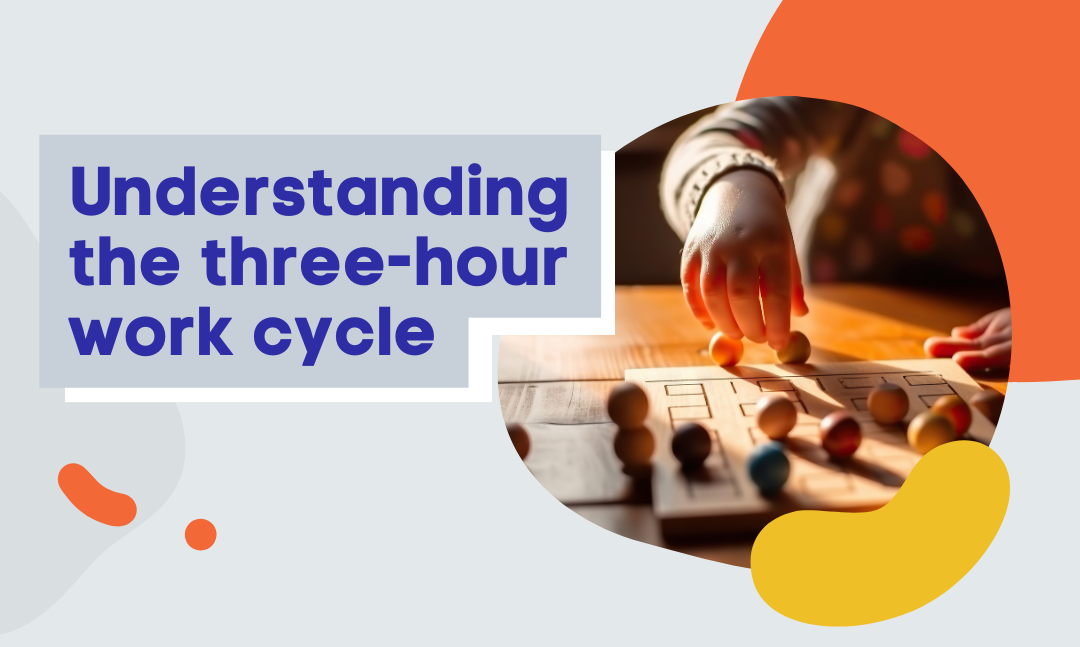Have you ever wondered why students learn in a three-hour work cycle in our environments? This schedule stems from Dr. Maria Montessori’s discovery of childrens’ distinct pattern of learning. She learned their attention spans consist of two peaks and one valley, each lasting approximately three hours. Montessori schools around the world adapted this timeline to improve student concentration and interest.
Why three hours?
Children, when given the choice of activity, can concentrate for up to three hours before experiencing false fatigue. False fatigue is when children appear to get tired after completing different activities. However, they aren’t really fatigued and will actually return to their work at a higher energy level than before. Three hours gives the child freedom to repeat the activity or try something completely new. Either way improves their sense of personal choice and ability to focus.
What are the benefits?
The benefits of this cycle come when the children return to a higher level of learning by the third block of time. These long periods of learning and exploration without interruption greatly improve a child’s ability to concentrate. In a typical school setting, students may change classes or subjects every 45 minutes to an hour. This interruption of concentration and learning doesn’t allow students to fully understand the lessons. The three-hour cycle lets students dive deeper into topics and grasp concepts without disruption.
How do students react?
Our students thrive in the three-hour work cycle. They have freedom to choose their focus each day, and they spend time really understanding the subject. The length of the cycles allow them to try new things, repeat interesting activities and learn from others. Minimal to no interruptions let them fully explore their interests.
If you are interested in learning more about the three-hour work cycle at MMS, don’t hesitate to
reach out!

